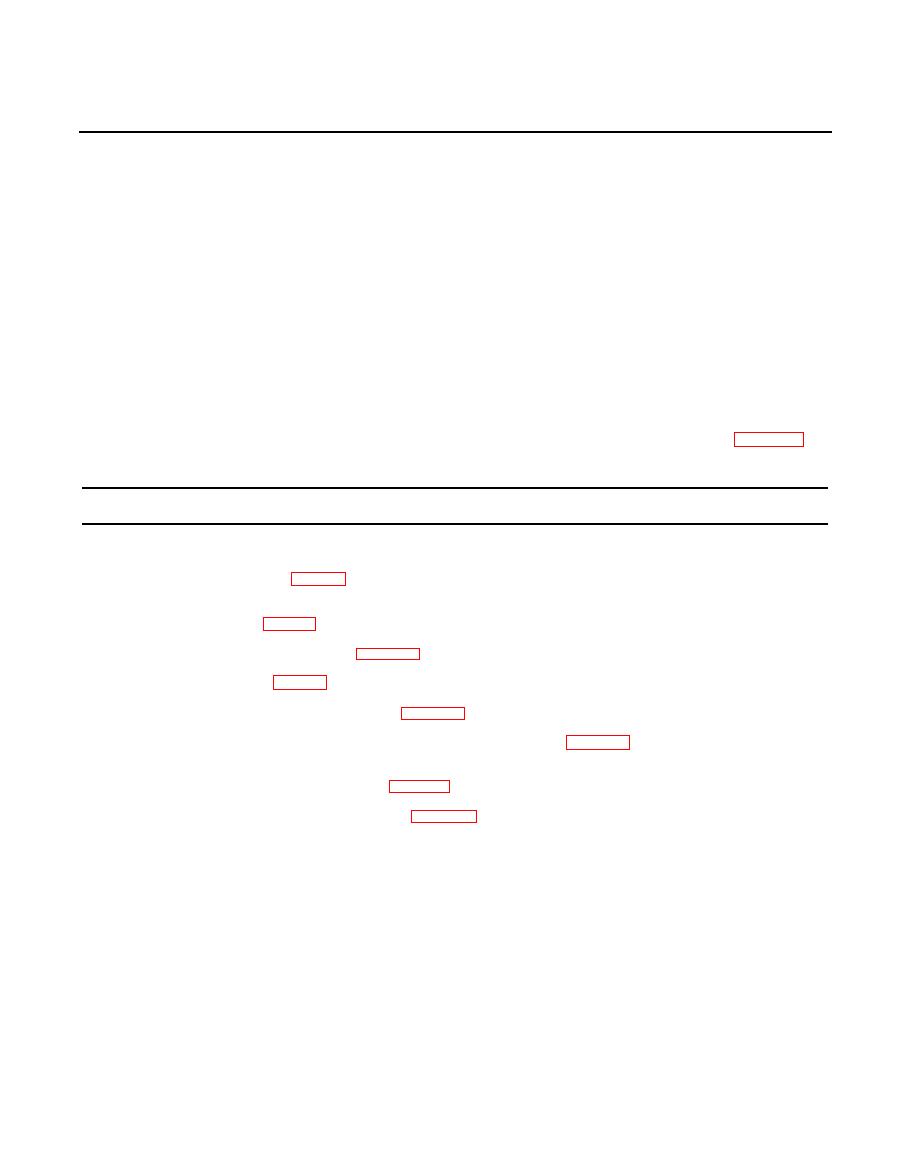
TM 9-4940-421-14
DIRECT SUPPORT AND GENERAL SUPPORT MAINTENANCE INSTRUCTIONS
S e c t i o n I. REPAIR PARTS, SPECIAL TOOLS AND EQUIPMENT
5-1. SPECIAL TOOLS AND EQUIPMENT. N o
special tools or equipment are required by direct sup-
support maintenance repair parts are listed in TM
port and general support maintenance personnel for
9-4940-421-24P.
the maintenance of the shop set.
Section II. T R O U B L E S H O O T I N G
may occur, nor all tests or inspections and corrective
5-3. GENERAL.
actions. If a malfunction is not listed or is not corrected
a. This section contains troubleshooting information
by listed corrective actions, notify your supervisor.
for locating and correcting most of the operating trou-
c. The table lists the common malfunctions which
blea which may develop in the shop set, Each malfunc-
you may find during the operation or maintenance of
tion for an individual component, unit, or system is
the shop set or its components. You should perform the
followed by a list of tests or inspections which will help
tests/inspections and corrective actions in the order
you to determine corrective actions to take. You should
listed.
perform the tests/inspections and corrective actions in
the order listed.
b. This manual cannot list all malfunctions that
direct support and general support troubleshooting.
Table 5-1. TROUBLESHOOTING
MALFUNCTION
TEST OR INSPECTION
CORRECTIVE ACTION
ENGINE
1. ENGINE BACKFIRES
Overheated or sticky valves.
Repair or replace valves (para 6-12).
2. ENGINE KNOCKS
Step 1. Worn or loose piston pin.
Replace piston pin (para 6-17).
Step 2. Connecting rod bearing loose or burned out.
Replace any worn or damaged parts (para 6-17).
Step 3. Loose connecting rod bearings.
Install new bearings (para 6-17).
Step 4. Weak or broken valve springs.
Check valve springs and replace if necessary (para 6-12).
Step 5. Excessive carbon.
Remove cylinder heads and scrape carbon from head and from top of piston (para 6-11).
3. OIL CONSUMPTION HIGH
Step 1. Worn valve guides, oil rings, cylinder walls and pistons.
Replace worn guides, oil rings, and pistons (para 6-12, 6-17).
Step 2. Worn main or connecting rod bearings.
Replace worn main or connecting rod bearings (para 6-17).
FLYWHEEL ALTERNATOR
1. BATTERY OVERCHARGE
With engine running full governed rpm, check battery voltage with dc voltmeter.
If voltage is over 15.0.
Replace regulator module.
If voltage is under 15.0.
Check battery condition.
2. LOW/NO CHARGE
Step 1. With engine running at full governed rpm, check battery voltage with dc voltmeter. If voltage is greater than 14 volts, place load
on battery to reduce voltage below 14 volts.
If the change rate increases.
Replace regulator module.
If charge rats does not increase with new regulator module.
Replace rectifier module.
Step 2. With engine stopped unplug all connectors between modules and stator. Start engine and run at full governed rpm. With ac
voltmeter check voltage between each of the black stator leads and ground. If one of the two voltages iszero or they are over 10%
apart.
Replace the stator.

